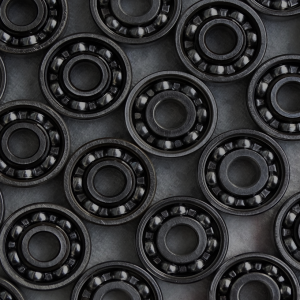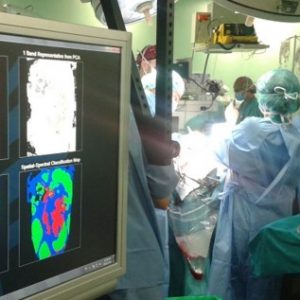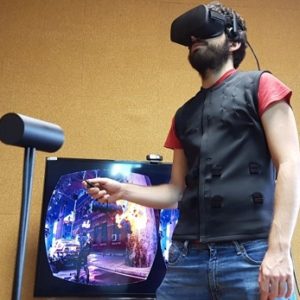Brief description of the technology solution and the added value it provides
Platform for assistance in the diagnosis of neurological disorders based on a visual test and a measurement system of some relevant movements that provides objective data, functional biomarkers, about the behavior of the centrl nervous system. It is a non-invasive and fast test that takes between 5 and 8 minutes.
The data given by the platform cannot be obtained or deduced by any other test of the protocol, therefore they are useful and extra information for the medical staff. The platform was inspired by the Attention Deficit Disorder with or without Hyperactivity, AHAD, however the versatility of the biomarkers make it a tool to assist in diagnosis of diseases such as ataxia, Parkinson’s disease, parkinsonism, dementia, schizophrenia, cognitive decline, etc.
Description of the technological base
This platform shows biomarkers associated to behavior of CNS (central nervous system) by the measurement of some specific motor movements. The test is non-invasive and fast, and is based on a visual test designed by the medical team. Biomarkers are not possible to obtain with any other test included in the protocol disease diagnosis. The device should be low cost, portable and versatile.
The technological solution was demanded by a group of pediatric neurology at University Hospital of La Paz, Madrid. It is a national and international reference hospital in this area. Medical staff asked for medical devices to assist them in diagnosis of increasingly prevalent neurological diseases in the population. Thus, the platform is developed under strict medical instructions. Its use is exclusive for doctors but is particularly aimed at specialists in neurology and psychiatry. The platform is useful both in scientific and clinical practice.
“The platform assists doctor in the diagnosis of diseases such as ADHD, autism, schizophrenia, ataxia, dementia, Parkinson, perkisonism, cognitive declines, etc.”
Market demands
- The World Health Organization estimates the number of people affected by attention deficit disorder with or without hyperactivity in 370 million, 5.3% of the world population. In Spain, the prevalence is about 6%, the same in Europe.
- In the US the prevalence is around 10%. According to some statistics it increased 53% in the last 10 years.
- The difference between Europe and USA prevalence data can be mainly justified by two reasons:
- Diagnostic protocols are different in both sides of Atlantic Ocean,
- There is not one methodology universally accepted by medical community that support the diagnosis
- In April 2013, the European Economic Community made public the results of an expert committee through a white paper called “Making the invisible visible”. The cost of disease for healthcare system is given. However the white paper suggests extra cost must by computed like educational system, family cost, justice system and productivity loss in adults worker with ADHD. White paper also gives guidelines for disease: improving knowledge about ADHD, increase early and accurate diagnosis of ADHD, ensuring access to appropriate treatment of ADHD, encourage the participation of patient associations and invest more in research efforts in this field.
Competitive advantages
- Low cost and portability,
- Ability to rule out comorbid pathologies and versatility to detect other childhood and adult neurological disorders.
- Contribute significantly to the research on the disease of central nervous system.
- Functional biomarkers are given.
“The prototype was developed with the Department of Anatomy, Histology and Neuroscience, Faculty of Medicine of the Autonomous University of Madrid, researchers IdiPAZ and medical staff of University Hospital of La Paz, Madrid, Spain”
“Schizophrenia medical treatment costs $33 billion per year in US – approximately 3.3% of the US population suffer from schizophrenia and bipolar disorder”
Development stage
- Concept
- Research
- Lab prototype
- Industrial prototype
- Production
Contact
Contacto solución tecnológica
Cecilia E. García Cena
Centro de Automática y Robótica UPM-CSIC (CAR)
e:
Contacto UPM
Área de Innovación, Comercialización y Creación de Empresas
Centro de Apoyo a la Innovación Tecnológica – UPM
e:















